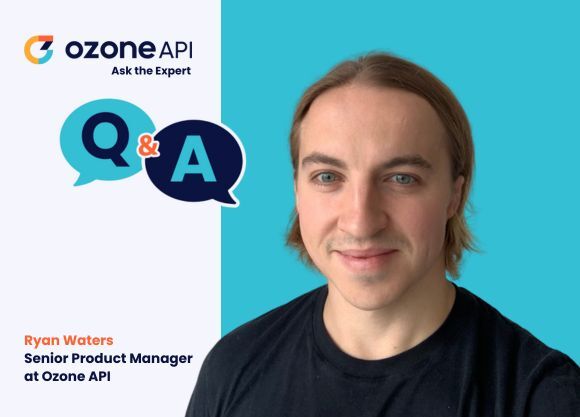Mastering Verification of Payee with Senior Product Manager Ryan Waters


As digital payments continue to grow across Europe, so does the need for enhanced security and fraud prevention. One of the latest developments in this space is Verification Of Payee (VOP) — a scheme introduced by the European Payments Council (EPC) to reduce fraud and misdirected payments in the SEPA zone.
But what exactly is VOP? How does it work, and how does it compare to the UK’s Confirmation of Payee (CoP)? What are the key compliance requirements for banks and Payment Service Providers (PSPs) ahead of the October 2025 deadline?
To answer these questions, we sat down with Ryan Waters, Senior Product Manager at Ozone API, to explore the technical and regulatory aspects of VOP.
In this deep dive, Ryan shares insights on the VOP request process, the role of Routing and Verification Mechanisms (RVMs), and how organisations can work with Ozone API to streamline compliance.
Whether you’re a payment provider, bank, or fintech looking to understand VOP and its impact, this expert discussion will provide the clarity you need to stay ahead of the curve. Let’s jump in!
Question: What is VOP?
Answer: VOP, or Verification of Payee, is an initiative from the European Payments Council (the EPC) to improve the security of account-to-account payments in the SEPA zone. Users can check the account name or business identifier of the account they are sending money to before they make a payment.
This reduces the risk of payment fraud because customers can have greater confidence that they are sending funds to the correct payee account in advance of making the payment. VOP acts as a stand alone messaging service and does not impact other aspects of the normal payment journey.
Question: What are the possible responses to a VOP request?
Answer: A VOP request has 4 possible responses – 1) Yes it’s a match 2) No it’s not a match 3) It’s a close match, or 4) Not Applicable meaning the check cannot be completed.
The design is intended to protect the privacy of the payee’s information whilst providing appropriate feedback to the payer such that they can decide whether or not to proceed with the payment. In cases of a ‘close match’ response, the actual name of the payee is provided back to the payer for feedback.
Question: Are CoP and VOP different?
Answer: Verification Of Payee and Confirmation of Payee are different schemes with different technical requirements, but VOP can be thought of as the European equivalent of CoP in the UK.
The purpose of both schemes is to prevent potential payment fraud by giving enhanced information to the payer about the payee details. There are also differences in the trust framework, in VOP participants identify themselves through PSD2 eIDAS certificates, whereas in CoP everything is managed through the centralised Pay.UK directory.
Question: Who is impacted by VOP and what’s the deadline for implementation?
Answer: Any Bank or Payment Services Provider that makes SEPA Credit Transfer or SEPA Instant Credit Transfer payments is impacted by the VOP rules and regulations. All SEPA payments including bulk payments should have Verification Of Payee checks available to the payer and these checks should happen on every payment.
The deadline for compliance is October 9th 2025.
Question: What is an RVM and do I need one?
Answer: An RVM or ‘Routing and Verification Mechanism’ are technology services providers who can act as members of the Verification Of Payee scheme and make VOP requests and provide VOP responses on behalf of PSPs or Financial Institutions who hold the end relationship with the customer.
There are lots of reasons an organisation that needs to comply with the VOP rules may want to use an RVM to support Verification Of Payee compliance. This could be speed of implementation, to reduce the cost of building a technical solution in house, or simplifying the complexity of maintaining compliance as and when the VOP specifications evolve over time.
Question: What is ART?
Answer: ART, also known as the API reference toolbox, is a testing facility that will be provided by the EPC to participating PSPs and RVMs to help participants build a scheme-compliant VOP solution and also to self-certify compliance with the EPC directory specifications.
Question: Does the EDS store end user information?
Answer: The EDS is the EPC Directory Service, the EDS will act as the central directory for scheme participants enabling them to understand how to reach each other’s Verification Of Payee services, it does not store any information about end users.
Question: How do I connect to Ozone API?
Answer: Ozone provides two VOP integrations – Requester API and Responder API allowing any PSP customer to on the one hand make VOP requests and also to submit VOP responses when requests are made by other PSPs.
___
With a rapidly approaching deadline, Ozone API has everything you need to quickly, and simply implement Verification Of Payee. Get in touch today to speak to one of our sales experts.
How can banks monetise open banking APIs? Ozone API CEO & Co-Founder explores 3 commercial models to turn APIs into profit.
Cómo Brasil construyó un ecosistema financiero abierto integral en 5 años con más de 700 participantes y más de 60 millones de usuarios, pasando de seguidor a líder mundial.
Consumer-Driven Banking in Canada received a significant push in the new federal budget released on November 4th 2025. Find out what it all means.